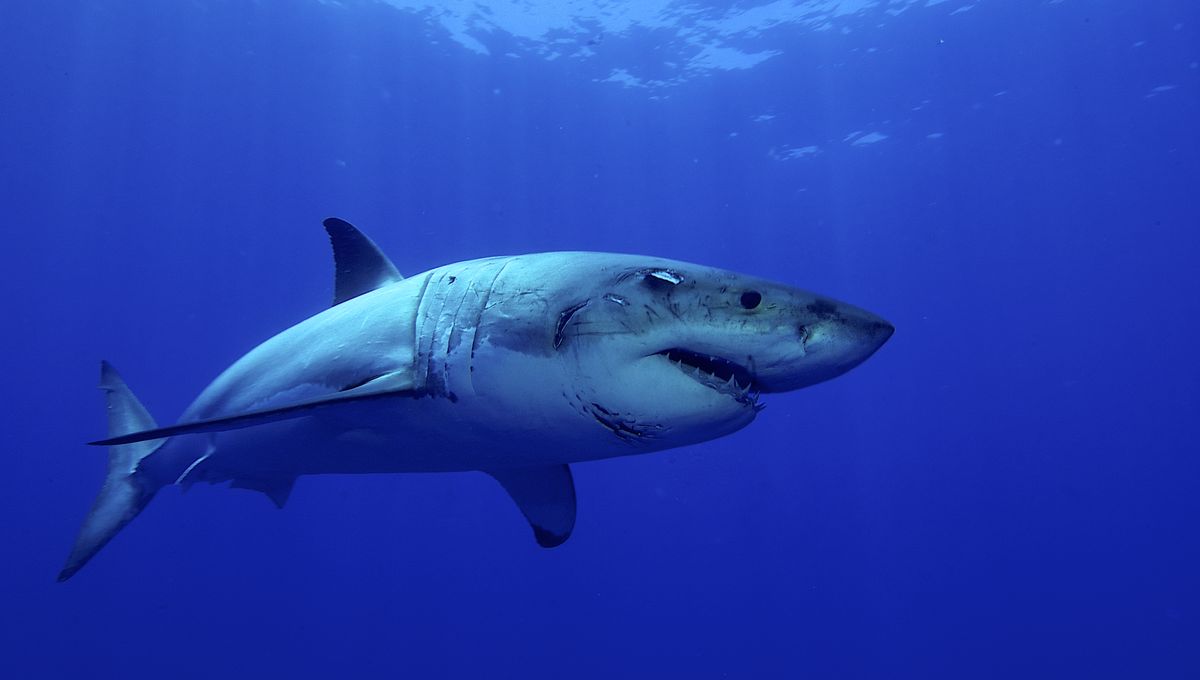
It’s a hard life, being a shark. You’re already fighting off extinction at all hours; you’re working against a 50-year-old bad rap that’s left millions of people convinced you’re a soulless ocean psychopath; and everything from orcas, to humans, to those same humans’ tiny pets, think you’re little more than a swimming snack-in-waiting.
And to top it all off, nobody even knows how bad you’ve got it. Not really, at any rate: humans might notice your various bumps and bruises and bits out of you, but they’ve so far proven themselves pretty slapdash when it comes to figuring out what they mean.
At least, until now.
“The scars and wounds seen on the sharks tell us about their interactions with each other, their environment, their prey and humans,” explained Scot Anderson, Senior Researcher at the California White Shark Project and coauthor of a new study aiming to present a classification system for wounds and scars found on white sharks.
“Many of the scars are distinctive enough [that] they can be easily classified,” Anderson told BBC Wildlife Magazine this week. For example: see a great white with a near-perfectly circular hole bitten into it? That’ll be from a cookiecutter shark – the weird little freaks of the shark world, named for the striking regularity of their bitemarks. Find one with a row of tight, straight lines stripped into its skin? That’ll likely be from an orca, trying to get at that juicy shark liver.
There’s plenty of such examples, and they’re not only useful for figuring out what’s been eating at your local shark populations lately. “White sharks […] are one of the most studied elasmobranch species with over 21,000 instrumented tracking days, documented regional population trends, and a sequenced genome,” the paper explains – and yet “despite decades of dedicated research, targeted tourism, and natural history observation, significant gaps remain in our basic knowledge of their natural history.”
“For example, no one knows the gestation period of a white shark, where they give birth, when and where they mate, and how they interact with prey, predators and each other,” the authors point out.
What they’re suggesting, in essence, is a sort of selachian scar-based diary. We know pretty well how shark injuries heal, and what they look like as they do – so maybe, the researchers suggest, we can use that to piece together the life stories that led to these scrapes and scabs.
Take the question of mating, Anderson explained. “In many shark species, males must bite the female in order to hold on while copulating,” he said – but by the time his team sees the evidence of these “hold bites”, they are “always mostly or completely healed.”
That implies that these sharks probably mate offshore, in the open ocean – the same place they come into conflict with those cookiecutters, in fact, if those telltale scars are to be believed. “It’s another puzzle piece that tells a story of what these white sharks experience,” Anderson said.
And remember, it’s not only their fellow sea-beasties that take the odd pop at a shark. Humans are far and away the bigger problem, and the marks seen on sharks can similarly tell the tale of our own impact on the species: “Boat propellers cause large traumatic wounds on white sharks which in severe cases are likely to be fatal,” the paper explains; getting entangled in fishing gear, meanwhile, can be identified by the “white impression (‘rope burn’) that sometimes reveals the spiral twist of the line.”
In a time when sharks are more threatened than ever, this kind of scar-based dictionary may also prove a valuable resource for conservation purposes. And hopefully, given enough data and evidence, such a resource might be created for species outside of just the white shark too, the team suggest.
After all – we kind of owe it to them, at this point. Right?
The study is published in the journal Frontiers in Marine Science.
Source Link: Shark Got A Hole In It? All-New Classification System Can Tell You Why